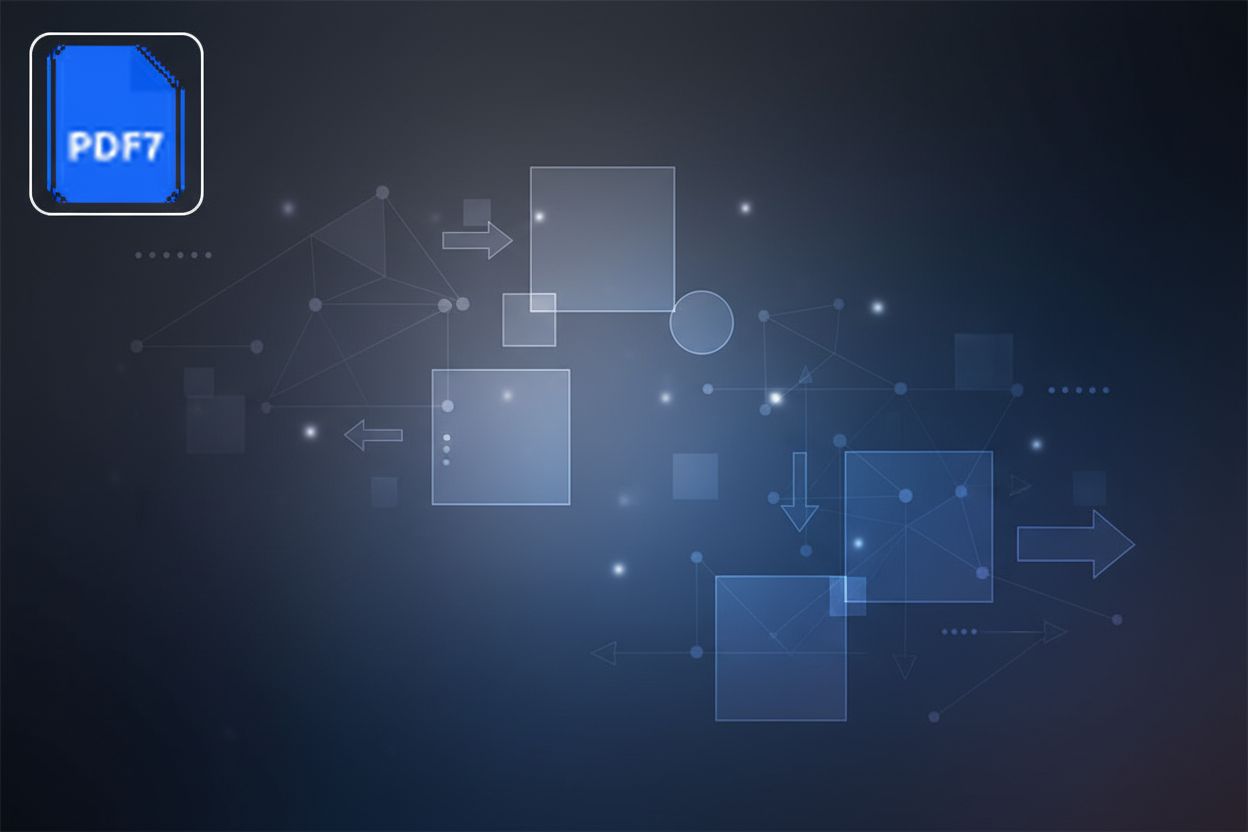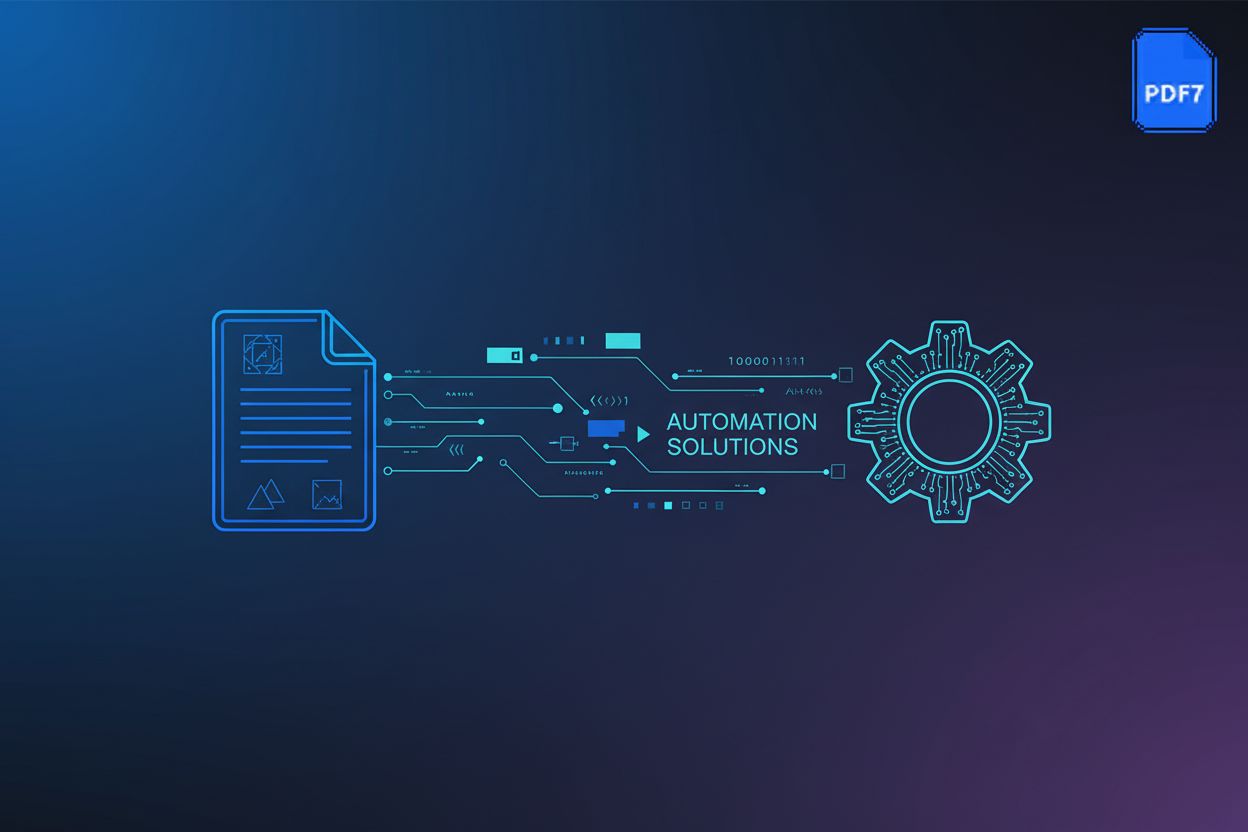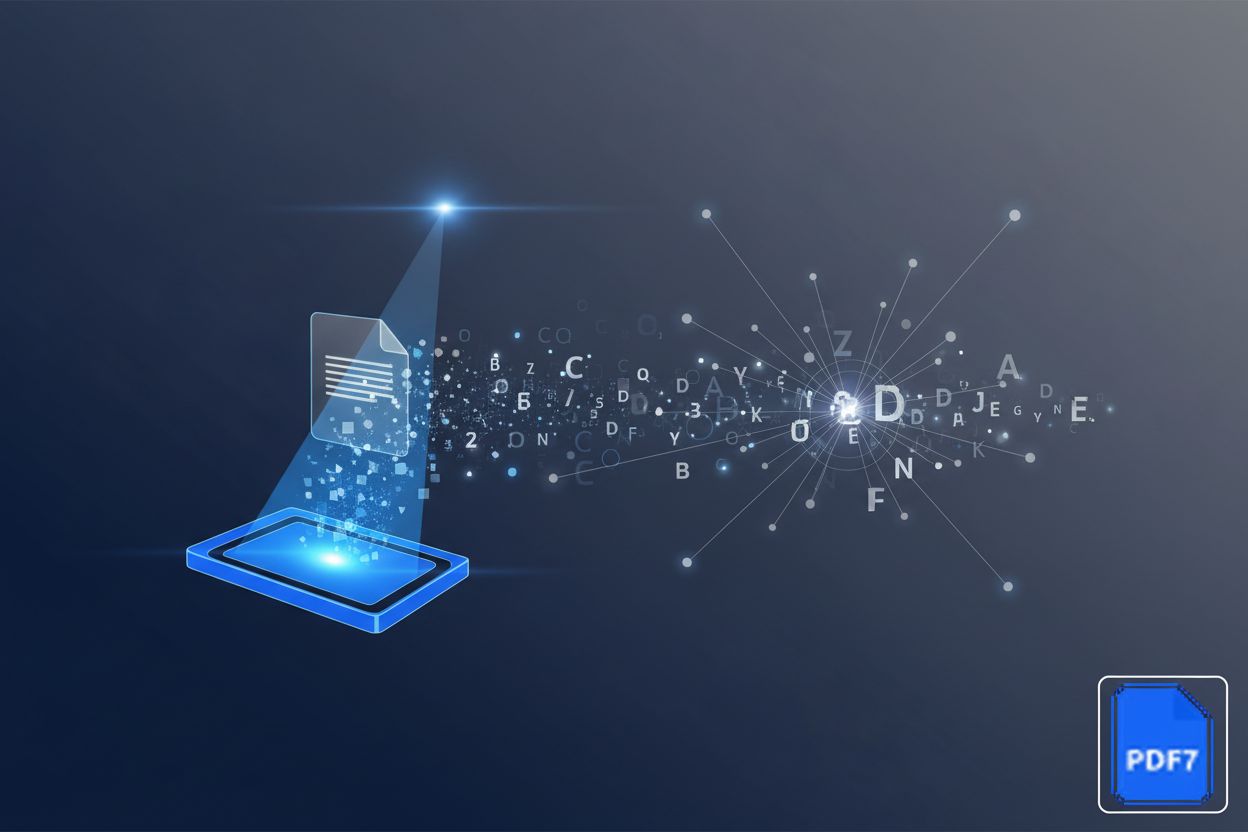Revolutionizing Document Workflows: How AI-Powered Summarization is Transforming PDF Processing
TL;DR
The Rise of Information Overload and the Need for AI Summarization
Imagine spending countless hours sifting through documents, only to miss crucial details hidden within. This is the reality for many professionals today.
The amount of digital information is growing rapidly, especially in the form of PDFs. Professionals are spending more time than ever sifting through these documents.
For example, in healthcare, doctors must review numerous patient files, research papers, and regulatory documents daily. Similarly, retail managers need to analyze sales reports, market trends, and customer feedback to make informed decisions.
This surge in digital documents creates a need for tools that can quickly extract relevant information, saving time and improving productivity.
Manual document review is time-consuming and inefficient, increasing the risk of missing critical information in lengthy documents. Comparing and contrasting multiple documents can be nearly impossible.
In finance, analysts must manually compare financial statements from different companies, a process prone to errors and delays. Legal professionals face the challenge of reviewing extensive case files, contracts, and legal precedents, making it difficult to identify key information.
These challenges highlight the need for a better approach to document processing.
AI summarization rapidly condenses large amounts of text into digestible summaries, enabling efficient cross-document analysis and comparison. This reduces the time spent on document review and improves overall productivity.
For example, ai can quickly summarize research findings, cross-check sources, and facilitate collaboration.
Ai-powered tools improve information accessibility and speed up decision-making.
Ai summarization is transforming how we handle documents. Next, we'll explore the specific ai technologies that make this possible.
Understanding AI-Powered Document Summarization
Ai-powered document summarization is like having a super-efficient research assistant who can distill key information in seconds. But how do these tools actually work? Let's break down the core components and techniques behind ai summarization.
Ai summarization employs two primary techniques: extractive and abstractive. Each approach offers distinct advantages, depending on the specific needs of the user.
- Extractive summarization works by identifying and pulling out key sentences directly from the original text. Think of it as highlighting the most important parts of a document and stitching them together. This method ensures the summary remains faithful to the source material.
- Abstractive summarization, on the other hand, goes a step further. It aims to understand the context and generate new sentences that capture the main ideas. This approach can produce more concise and coherent summaries, but it also requires a deeper understanding of the text. Achieving this "deeper understanding" involves complex natural language understanding (NLU) capabilities. Models need to grasp semantic meaning, identify relationships between concepts, and infer information not explicitly stated. This is technically challenging because it requires models to go beyond keyword matching and truly comprehend the nuances of human language, including idioms, sarcasm, and complex sentence structures.
Large Language Models (LLMs) are the engines driving much of the recent advancements in ai summarization. These models, trained on vast amounts of text data, possess an impressive ability to understand and generate human-like text.
- LLMs like GPT-4 and Gemini can analyze complex documents, identify key themes, and produce summaries with remarkable accuracy. Their ability to understand context is crucial for abstractive summarization, where new sentences are generated.
- These models are continuously evolving, learning from new data and improving their summarization capabilities. As they become more sophisticated, we can expect even more accurate and nuanced summaries.
An effective ai summarization system relies on several key components working in harmony. These components ensure that the system can accurately extract, understand, and summarize information from various types of documents.
- Text extraction is the first step, often involving Optical Character Recognition (OCR) to convert scanned documents into machine-readable text. OCR ensures that even image-based PDFs can be processed. If OCR isn't enabled for scanned documents, the ai tool won't be able to "read" the text within the image, rendering it unable to summarize.
- Natural Language Processing (NLP) techniques are then used to analyze the extracted text, understand its structure, and identify key concepts. NLP helps the system grasp the context and relationships between different parts of the document.
- Machine Learning (ML) models are at the heart of the summarization process, generating concise and coherent summaries based on the NLP analysis. Common models include Recurrent Neural Networks (RNNs) and Transformer-based architectures like BERT and GPT. These models are trained on massive datasets of text and corresponding summaries, learning to identify important information and generate human-like summaries. For instance, a model might be trained on millions of news articles and their editor-written summaries to learn how to condense information effectively.
- Finally, a user interface is needed to allow users to input documents and receive the generated summaries. The interface should be intuitive and easy to use, allowing users to customize summarization parameters.
Understanding these core components and techniques provides a solid foundation for appreciating the power and potential of ai-powered document summarization. Next, we'll look at the practical applications of this technology across various industries.
Benefits of AI-Powered PDF Summarization Tools
Imagine reclaiming hours each week simply by reading less. Ai-powered PDF summarization tools are rapidly changing how professionals manage information.
Ai summarization tools drastically cut down the time spent on reviewing documents. Instead of manually sifting through lengthy PDFs, users receive concise summaries in seconds. This enables professionals to concentrate on strategic tasks that require critical thinking and creativity.
For instance, a marketing team can quickly analyze hundreds of customer reviews to identify key trends and sentiments, saving countless hours. Similarly, human resources can efficiently process numerous job applications, extracting essential qualifications. By automating the initial review, ai summarization allows employees to focus on higher-value responsibilities.
Faster access to information also accelerates decision-making. Managers can quickly grasp the key points of complex reports, enabling them to make informed decisions promptly. In fast-paced industries like finance, this speed can provide a significant competitive advantage.
Ai summarization helps condense information into easily digestible formats, making it easier to retain and understand. By highlighting the most important points, these tools improve focus and comprehension. This ensures that critical details are not overlooked.
For example, researchers can quickly grasp the core findings of multiple scientific papers, facilitating literature reviews and hypothesis development. Legal professionals can efficiently review case files, identifying key precedents and arguments. This enhanced understanding supports better knowledge management and information retrieval.
Ai-driven summaries can also be customized to meet specific needs, further improving comprehension. Users can adjust the length and focus of the summaries, ensuring that the most relevant information is highlighted. Beyond just length, some tools allow users to specify keywords to prioritize, exclude certain topics, or even choose different summarization styles (e.g., bullet points vs. narrative). This level of customization supports a more efficient and effective learning process.
Summaries enable quick sharing of essential information with team members, fostering collaboration and knowledge sharing. By providing a common understanding of complex documents, ai summarization facilitates discussions and alignment across teams. This promotes better communication and informed decision-making.
Consider a project management scenario where teams need to stay updated on project progress. Ai summaries of project reports can be quickly shared, ensuring that everyone is aware of key milestones, risks, and changes. According to Sharly Ai Summarizer, ai summarization enables efficient information extraction, helping teams to cross-check sources and collaborate effectively.
By providing quick and accurate summaries, ai summarization boosts productivity and collaboration, speeding up document workflows and setting the stage for exploring its diverse applications across various industries.
Use Cases Across Industries
Imagine legal teams spending less time buried in case files and more time building their arguments. Ai-powered summarization is making this a reality across various industries.
AI summarization tools enable lawyers to quickly review case law and legal documents, extracting key precedents and arguments efficiently. This can significantly improve legal research and case preparation.
Instead of manually combing through hundreds of pages, ai can highlight the most relevant information, saving time and reducing the risk of overlooking crucial details.
For example, ai can quickly summarize depositions, identify critical testimonies, and flag inconsistencies, improving the efficiency of litigation support.
In the fast-paced world of business, time is money. Ai summarization helps professionals digest lengthy market reports, competitor analyses, and financial statements, enabling faster, more informed decision-making.
Instead of spending hours reading through dense reports, managers can quickly grasp key insights and trends.
This empowers them to improve business strategy and gain a competitive advantage by identifying opportunities and potential risks more rapidly.
Researchers are constantly bombarded with new publications, making it challenging to stay up-to-date with the latest findings. Ai summarization tools can help academics stay current with the latest publications in their field.
Researchers can quickly grasp the main contributions of new papers, enhancing research productivity and knowledge synthesis. For instance, ai can summarize abstracts and key findings from multiple papers, helping academics identify relevant literature for their own research, spot emerging trends, or even synthesize findings across a body of work for literature reviews.
For example, ai can summarize research articles, allowing scientists to identify relevant studies and incorporate them into their work more efficiently.
By providing quick and accurate summaries, ai summarization is transforming how professionals across diverse sectors manage and utilize information.
Choosing the Right AI Summarization Tool
Choosing the right ai summarization tool can feel overwhelming, but focusing on key features simplifies the process. What aspects truly matter for your specific needs?
When selecting an ai summarization tool, several factors can impact its effectiveness for your specific needs. Here are some key features to consider:
- Accuracy and reliability are paramount. You need summaries that faithfully represent the original document's content. Look for tools with positive user reviews and transparent evaluation metrics. For example, Sharly Ai is known for its accurate summaries.
- Support for different file formats ensures versatility. Your tool should handle PDFs, DOCX, TXT, and other common formats to avoid compatibility issues. Tools like Sharly Ai support a wide range of formats, including audio and multimedia files.
- Customization options allow you to tailor summaries to your specific requirements. Features like adjustable summary length and focus ensure you get the most relevant information. Some tools offer customizable summarization options, allowing you to tailor the focus and depth of summaries to their specific needs and preferences.
- Integration with existing document management systems streamlines your workflow. Seamless integration with platforms like Google Drive or SharePoint enhances productivity.
- Security and privacy are crucial when dealing with sensitive documents. Ensure the tool has robust security measures and clear privacy policies to protect your data. Some tools ensures the privacy and security of all uploaded documents.
The market offers a variety of ai summarization tools, each with its own strengths and weaknesses. Here are some popular options:
- Sharly AI: This tool is known for accurate ai summaries and multi-format support, offering features like efficient information extraction and cross-document analysis.
- Google Cloud Document AI: This platform offers customizable summaries and integration with Google Cloud services, making it suitable for businesses already invested in the Google ecosystem. Google's Gemini is a separate, versatile ai model that can help you summarize text, code, scripts, musical pieces, email, letters, and more, primarily for personal use. While Document AI might leverage advanced ai models, Gemini is more directly accessible for individual summarization tasks.
- ClickUp: This is an all-in-one platform for document collaboration, project management, and ai-powered summarization, integrating its ai features directly within ClickUp Docs.
- Other tools: Some other tools include Get Digest, Scribbr, Summary Generator, Notta, Paraphraser.io, Jasper, Writesonic, Gimme Summary AI, and Copy.ai.
PDF7 is primarily a PDF manipulation tool that also offers an ai-powered summarization feature. It allows you to convert, compress, and edit PDF files online with its free tools, and it can convert PDFs to various formats like Word, Excel, and JPG. Its ai summarization tool condenses lengthy documents into concise summaries, saving you valuable time and effort.
With the right tool, managing information becomes significantly easier.
Implementing AI Summarization in Your Workflow
Ready to put ai summarization to work? Implementing these tools into your daily workflow can significantly boost productivity.
Here's a breakdown of how to start using ai summarization tools effectively:
- First, upload or input your document text into the ai tool. Many tools support various file formats like PDF, DOCX, and TXT. For scanned documents, ensure OCR is enabled for accurate text extraction.
- Next, customize summarization settings if the tool offers them. Adjust the summary length, focus on specific topics, or select the desired summarization style (extractive or abstractive). Some tools, like Sharly Ai Summarizer, allow you to tailor the focus and depth of summaries to your specific needs.
- Then, generate and review the summary. The ai tool processes the document and produces a concise summary based on your settings. Take a moment to read through the summary to ensure it accurately reflects the original content.
- After that, edit and refine the summary as needed. Most tools allow you to make manual adjustments to the generated summary. Correct any errors, rephrase sentences, or add additional information to improve clarity.
- Finally, share the summary with stakeholders. Export the summary in a suitable format (e.g., TXT, DOCX) or share it directly through the tool's collaboration features. This ensures everyone stays informed efficiently.
Ai summarization can be seamlessly integrated with document management systems to streamline workflows:
- Automate summary generation for new documents as they are added to the system. This provides an immediate overview of the document's content, saving time for users.
- Use summaries as metadata to improve document search and retrieval. By tagging documents with ai-generated summaries, users can easily find relevant information based on key topics and themes.
- Enhance document accessibility and usability by providing concise summaries alongside the full documents. This allows users to quickly assess the relevance of a document before diving into the details.
To maximize the benefits of ai summarization, follow these best practices:
- Ensure the quality and accuracy of summaries by carefully reviewing the generated output. While ai tools are becoming increasingly sophisticated, they may still make errors or miss important nuances.
- Combine ai summaries with human review for optimal results. Use ai to generate the initial summary, then have a human expert review and refine it for accuracy and completeness.
- Provide feedback to improve ai summarization models. Many tools allow users to provide feedback on the quality of the summaries. This helps to train the ai models and improve their performance over time.
By following these steps, you can seamlessly integrate ai summarization into your workflow and unlock its full potential.
The Future of AI in Document Processing
Ai's transformative journey in document processing is far from over. As ai evolves, so too will its role in how we manage and understand information.
Expect Large Language Models (LLMs) to produce more accurate summaries. These models will deliver nuanced insights from complex documents.
Ai will integrate with document processing tools like translation and OCR. For example, a summarized document could be automatically translated into multiple languages, or ai could use its understanding of context from summarization models to improve the accuracy of OCR by predicting missing characters or correcting misinterpretations in scanned text.
Personalized summarization will tailor summaries to user preferences. This ensures users receive the most relevant information.
Document processing tasks will see further automation. Ai will handle routine tasks more efficiently.
Knowledge workers can anticipate increased efficiency and productivity. Ai will free up time for strategic thinking.
Organizations will transform how they manage information. This will lead to better decision-making.
Ensuring fairness and protecting sensitive data are paramount. Transparency and accountability become crucial in ai-driven processes. This means developing methods to identify and mitigate biases in summarization algorithms, implementing robust data anonymization and encryption techniques to safeguard sensitive information, and creating mechanisms for users to understand how summaries are generated and to challenge their accuracy. The future of document processing relies on ethical ai implementation.






